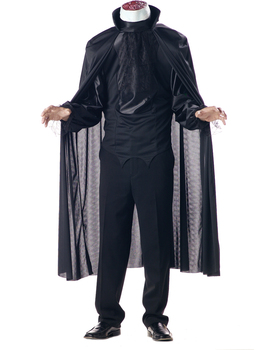Headless Witch Zombies in Nineteenth-Century England! April 16, 2014
Author: Beach Combing | in : Modern , trackbackStrangehistory has given some publicity in the past to the peculiar custom, found throughout the English-speaking world and beyond, of blood-letting to break witchcraft: the victim must draw blood from the witch, preferably from the face. It would be pointless to give yet another example of this barbarity. But though blood-letting features in the following extraordinary case, there are also other features that rear above it in terms of interest: not least the fact that the ‘witch’ here was believed to control headless zombies! Oh and the year is 1868 (not 1568) and we are in Stratford-upon-Avon, hardly a rural outpost.
For some time past a family named Davis, residing at Stratford-on-Avon, laboured under the most extraordinary delusions. They have persisted in the belief that visits have been made to them, in various shapes, by individuals a bodily form—some after the manner the patron saint of Paris, who carried his head under his arm ‘as a gentleman carries his cane.’ One yonng girl, who happened to an invalid, and is obliged to recline on a sofa, has declared her positive knowledge that a man and woman came down the chimney a few days since, both persons headless, and seizing her by the body, cast her violently on the ground, aud then tossed her in the air; after which they took up the sofa she had used, and went through a similar feat with it. Although Police-Superintendent Richardson shewed that the accumulated dust around the legs the furniture proved that no such thing could have happened, the entire family declared their firm conviction that the witches had been there, and also that the only way to break the spell they were under was draw blood from the person whom they supposed to be the witch.
Where to begin? Headless ghosts seem only to become a ‘problem’ in Britain in the eighteenth century. By the nineteenth century they were becoming baroque and out of place: a little too country-house to turn up in a back street in a British city? Any other thoughts: drbeachcombing AT yahoo DOT com. Two possibilities suggest themselves here. Either the family was suffering from a folie à deux, group madness: there are several strikingly similar cases from late nineteenth century Ireland. The second possibility that the invalid girl was the ‘vortex’ and either was manipulating or convincing her family about something that did not exist outside her own imagination. It is a strangely disturbing story: particularly the Police-Superintendent trying to reason with the furious family. In any case, the sequel was all too predictable.
[Witchcraft] was, unfortunately, attributed a neighbour named Jane Ward, who lived two doors away, and the man John Davis carried out his delusion suddenly pouncing the poor creature, and, seizing her firmly, he inflicted a frightful gash on her cheek, fully three inches long [and another report notes half an inch deep]. Having done this the whole family felt relieved and assured that ‘the spell was broken.’ for they told the superintendent that the following day they all slept well and undisturbed, which they had not done whilst the witch was left unexorcised.
Another writer describes Davis’ elation: When he saw the blood flowing down her face, he exclaimed, ‘There, you old witch, I can do anything with you now.’ At the station he said, in answer to the charge, ‘Serve her right; she can do no more for me now. I have drawn first blood.’ John Davis got eighteen months and hard labour: the judge was lenient because of his excellent character…



